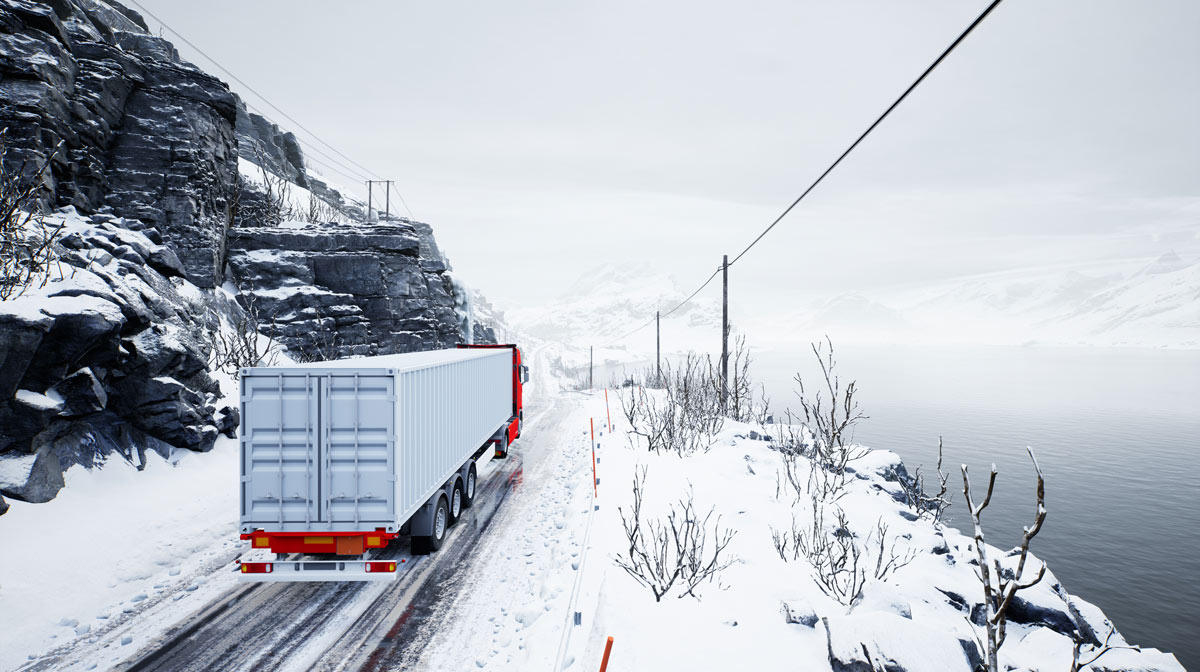
Tire tread depth: everything you need to know
- Blog
- Heavy Industry
- Tire tread depth: everything you need to know

What are tire treads?
Tire tread is the ribbed pattern or the shapes and knobs on a tire that are in contact with the road. It’s the tread that helps your tires grip the road and keep moving in the right direction. A tire tread usually consists of four components: tread blocks, tread grooves, tread voids and sipes. Although the whole of the tire that stretches from shoulder to shoulder makes up the tire tread, it’s usually the tread blocks—the rubber chunks that protrude from the surface of the tire—that are commonly referred to as the tread.
How do tire treads work?
Essentially, tire treads keep the vehicle connected to the road. The patterns on the tire help to move water, mud and snow out of the tires through the tread voids, helping you to stop smoothly and safely. Here’s how tire treads impact your driving experience:
- Maintain traction
Tire treads ensure that the traction, or the grip of your vehicle over the road, remains optimal. Without tire treads, the wheels would have a high chance of slipping off the roads when in contact with wet or icy terrain. - Handling and steering
As the various tread patterns have different outcomes, it’s important to choose tires with the correct patterns based on driving surfaces. Symmetrical tread patterns are better equipped for highway driving, as they offer higher stability and lower rolling resistance, whereas asymmetric tire treads provide higher curve stability and a stronger grip on wet roads. - Efficient acceleration and braking
It’s the tire treads that enable your truck to accelerate smoothly, ensuring that you stay safe. Similarly, they help the vehicle brake promptly and effectively even when the road is wet and slippery. The ridges and grooves in the tire allow the water to escape, preventing it from creating a barrier between the tire and the road.
What is tire tread depth and how do you check it?

The depth of the tire grooves is referred to as tire tread depth. A good tire tread depth is crucial to maintaining traction and enabling the driver to have a better, more cushioned grip on the road. Continuous wear and tear of the tires impact the depth of the tire tread, leading to reduced control of the vehicle and a greater chance of slips and skids. Tires with less-than-optimal tire depth have a lower force to cut through water, and therefore lower traction. They also tend to lose air pressure faster, which adversely impacts fuel economy.
Ensuring that your tires are in excellent condition is key to maintaining a high-performing fleet. An over-used tire with a worn tread may prove dangerous for commercial vehicles, especially while driving in slush or snow. Shallow tread depth might even cause a tire blow-out. Regularly checking the tire tread depth is therefore crucial for optimal performance and safety of commercial vehicles. There are also regulations in place for a legal minimum value for tire tread depth with fines for those who don’t comply. The US Department of Transportation recommends replacing tires with a tread depth of 2/32 of an inch or lower. Tire tread depth is typically expressed in 32nds of an inch.
There are two ways to check tire tread depth—by using a gauge or a penny to measure the tread depth.
Measuring tread depth with a gauge
The gauge is a simple tool with a wide base and a narrow probe hanging below the base. Here are the steps you need to follow:
- Insert the probe into the grooves between the tire treads.
- Press down on to the base plate of the gauge unit and record the reading
- Repeat this step in four different places on each tire
- The lowest reading is the one that you should consider as the correct overall reading.
| Tread Depth | What it means | Impact on braking distance |
| 6/32″ (4.76 mm) or greater | Your tires are safe | None |
| 5/32″ (3.97mm) | Could be risky to drive in icy or snowy conditions | Minimal |
| 4/32″ (3.18 mm) | Consider replacing, especially front tires | Noticeable |
| 3/32″ (2.38 mm) | Your tires are almost worn out. Front tires need to be replaced immediately | Significant |
| 2/32″ (1.60 mm) or less | Dangerous to drive, get new tires now. | High |
Measuring tread depth with a penny
If you don’t have a gauge, you can use a penny or a quarter to assess the condition of your tires. Although this won’t tell you the depth of the tread, it will indicate whether or not your tires are safe to use. Hold the coin so the head’s side image is facing you and upside down, and put it into your tire’s tread groove. If you can see the whole of the head, it indicates that your tread is shallow and that you need to change your tires
Other tread wear indicators—wear bars
Located at the bottom of the tread grooves of most tires are small bumps or wear bars that are efficient markers of tread wear. These are only 2/32″ above the bottom of the tread grove, which also matches the stipulated minimum tread depth for non-steer tires. When the surface of the tires is even with the wear bars, it indicates that your tires are worn out and need to be replaced.
What are the signs of a worn-out tire tread?
The most obvious sign of balding tires is when you notice your vehicle skidding on wet roads or sense an increase in road noise or vibrations. Other clues include a cracked or bulging side wall, flat spots on the tread or a pattern that doesn’t match the rest of the tire. The best way to stay on top of the condition of your tires is to inspect them regularly.
Here are the required tread depth specifications for commercial vehicles as per the Department of Transportation (DOT):
- Tires on the front wheels of a truck or truck tractor must have a minimum depth tread of 4/32 of an inch on every major tread groove. All the other tires need to have a minimum depth of 2/32 of an inch.
- The stipulated minimum tread depth for all trailer tires is 2/32 of an inch.
When to replace tires?
Experts recommend replacing tires before they hit the minimum tread to ensure maximum safety and optimal vehicle performance. The “safe” tire depth is considered to be 4/32″ which is double the minimum permissible tread depth in the US.
On wet roads, tires with a tread depth of 2/32″ will take 50 percent longer to stop than those with 4/32″. It’s therefore ideal to change your tires when they reach the safe depth rather than waiting until they’re at the minimum legal tread depth.
The tread depth for winter tires

With different tread pattern designs and slits, winter tires are specially designed to enable a better grip while driving through ice and snow. The tread depths too are deeper than for standard tires, allowing the blocks to connect with the road beneath the layer of snow. This requires the winter tires to be replaced earlier—usually when they hit 4/32″—to maintain optimal traction in wintery driving conditions. Maintaining tire tread depth is an important factor in helping reduce fuel costs, as is optimizing asset utilization and streamlining your operations.
Learn how fleets around the world are making the most of ORBCOMM’s IoT-enabled smart fleet management solutions to get the data they need to make informed business decisions and maximize profitability.

Meghana Joshi is a Digital Marketing Specialist at ORBCOMM. Passionate about her craft, she uses her background in content marketing, copywriting, research and creative writing to create content that attracts, impacts and resonates with her audience.
















